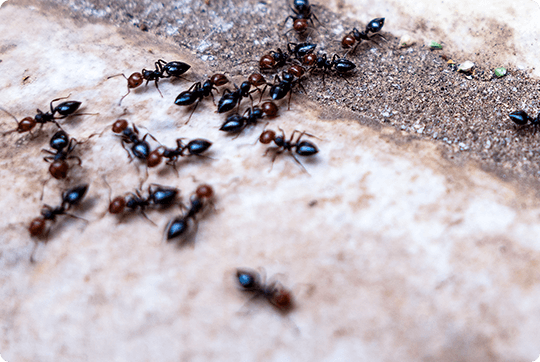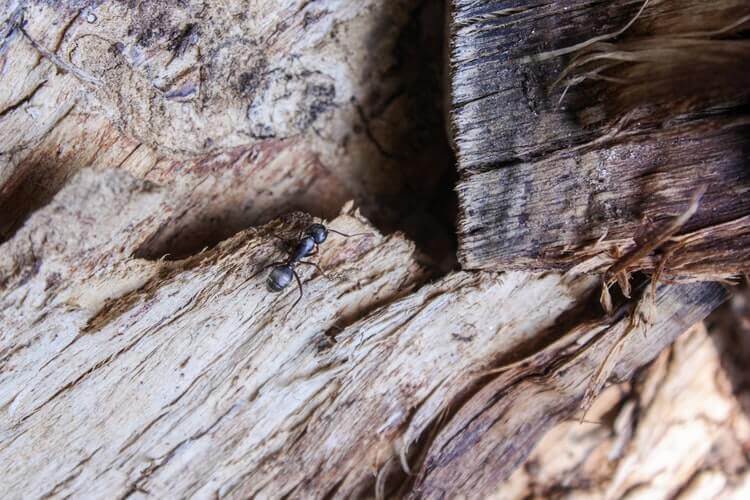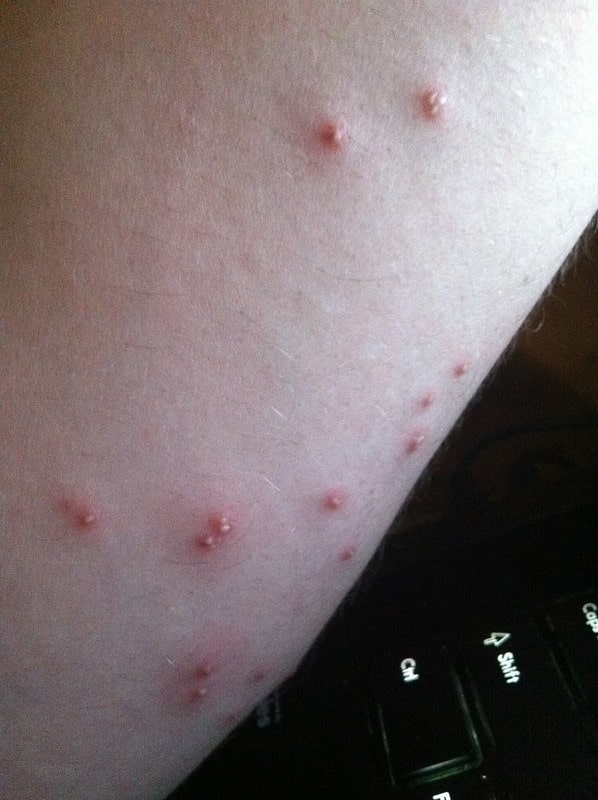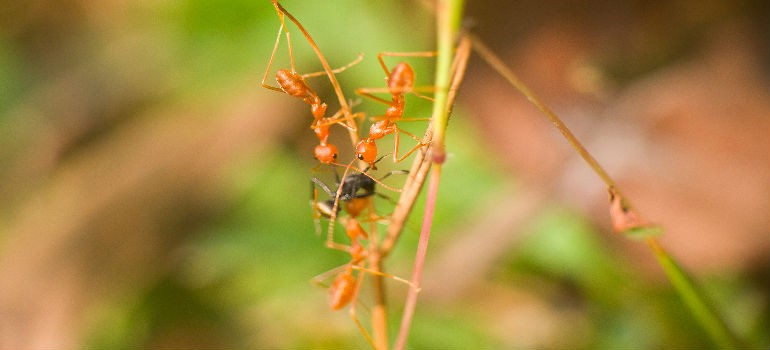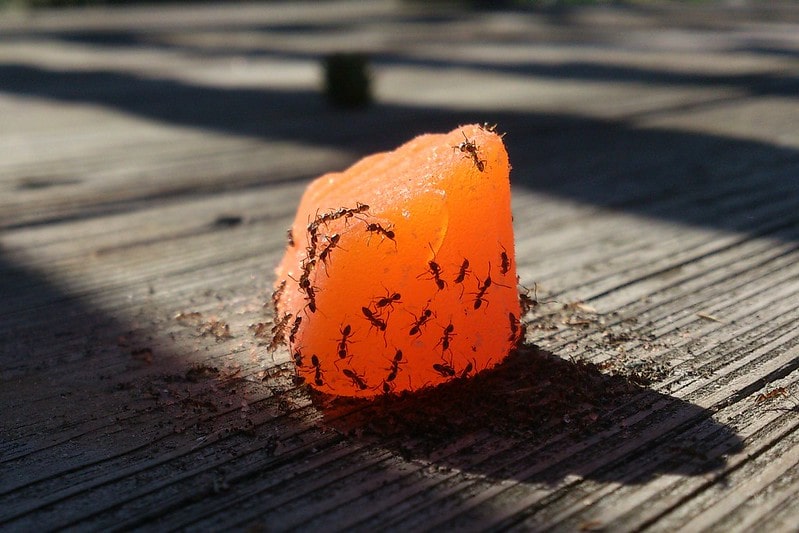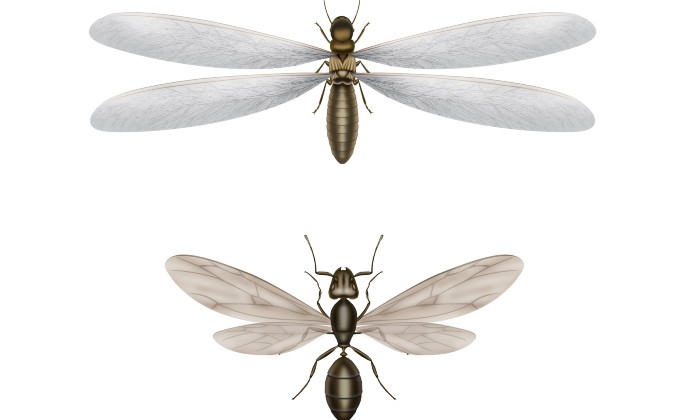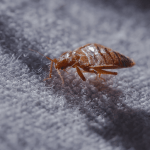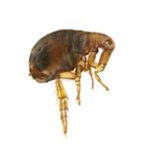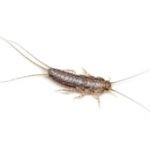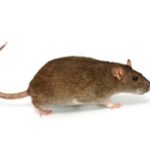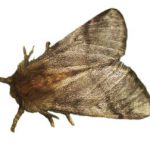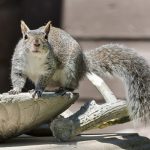Types of Ants in the UK
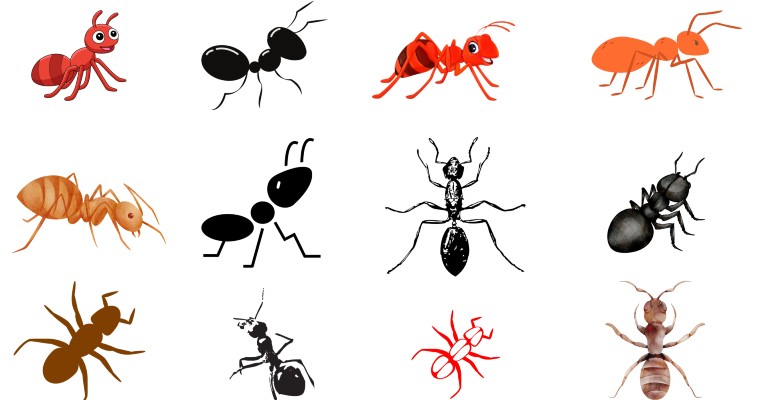
Image by: JunaidSavvy / Shutterstock
Ants are a common sight in gardens, parks, and homes across the UK. With over 50 British ants species, these tiny insects play a crucial role in the ecosystem by aerating soil, recycling nutrients, and controlling pest populations. But not all ants are the same – some are harmless, while others can be a nuisance.
In this article, we will take a close look at the most common types of ants in the UK, their appearance, behaviour ant nesting habits of different ant species.
Black Garden Ant (Lasius Niger)
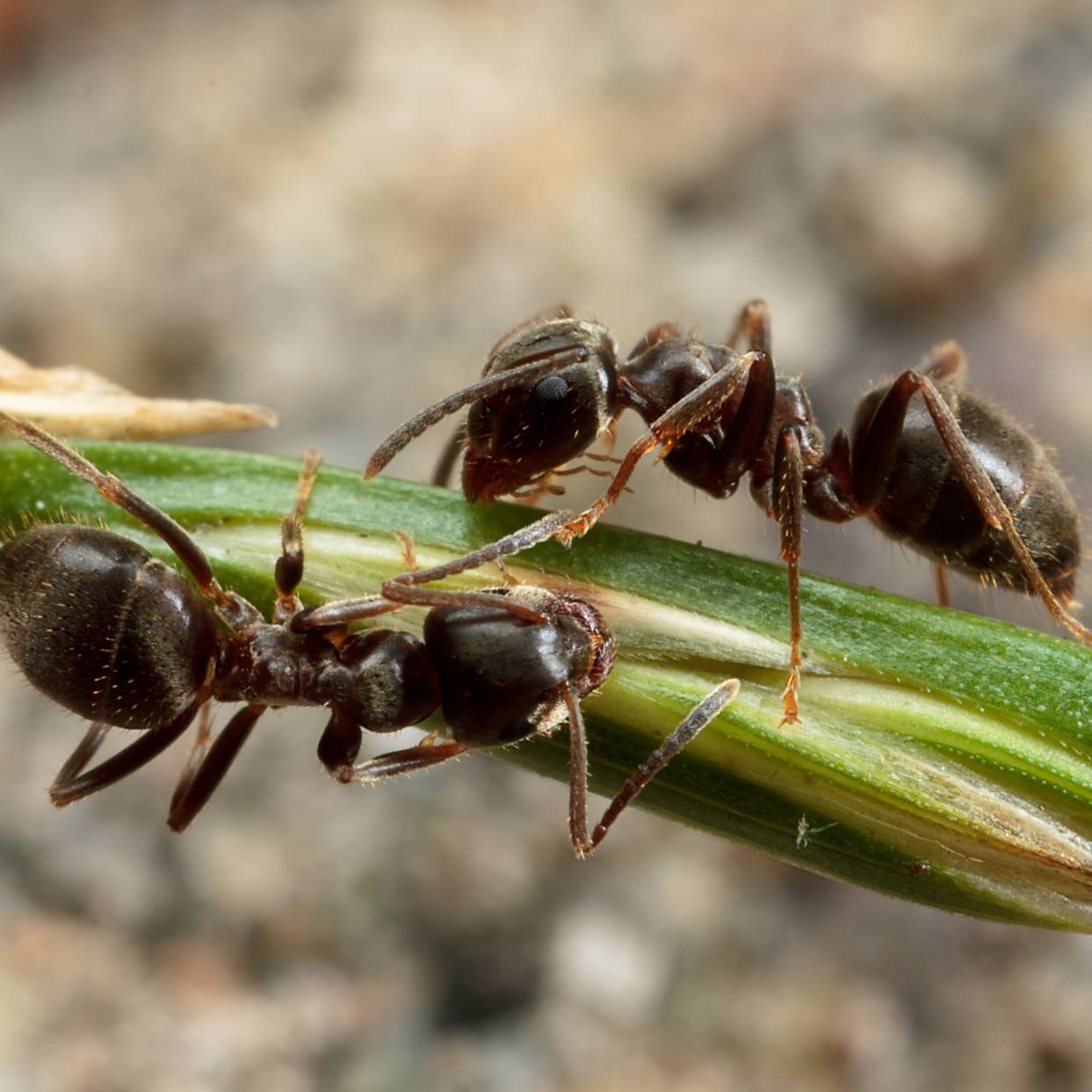
The black garden ant is common for all European countries and the UK is not an exception. The colony of this species may become as large as 40 000 workers but the number rarely exceeds 7000.
The black garden ant is the most well-known species in the UK, commonly found in gardens, driveways, and even homes.
- Appearance ans size: Small, dark brown to black in colour. On average, a common black garden ant is anywhere between 3 and 5mm in length. Adult ants become brownish or black. The black ant’s abdomen is well developed while their thorax and waist are slim with a much smaller diameter. A queen ant is 2-3 times larger than the average worker and can get up to 12mm long. After she mates, she removes her wings and consumes them as a food resource during the winter.
- Stages of growth: The common black ant, similar to other ant species has 4 stages of growth – egg, larvae, pupa and adult. This ant species lay small, white eggs that easily stick to one another which simplifies egg transportation and dissemination. The larvae look very similar to maggots and are usually fed by their queen. When a colony of black ants is well established, the workers may feed the larvae instead of the queen. The larvae have multiple stages of moulting until it grows big enough to spin a cocoon around itself and begins a process of metamorphosis. Often, the workers or the queen help with this by burying the larvae so it can begin metamorphosis easier. Once the metamorphosis is over, an ant breaks out from the cocoon. At first, it’s white-coloured but during growth, it turns brown to black.
- Habitat: Black garden ants build underground nests in soil, often near plants, patios, and flower beds, under pavements, or in garden lawns. Nests are commonly found under paving stones, cracks in concrete, and pathways. Garden ants invade houses in search of food, especially during warm months, but they usually nest outdoors.
- Behaviour: Highly social, with large colonies; forages for sweet foods. The common black ant is often seen in kitchens, scavenging for food inside cupboards and in the corners of the kitchen floor. Ants also gets inside rubbish bags and bins where leftovers are often thrown out. No matter what measures you take, the most effective way to deal with a colony of black ants is to call for a professional ant treatment and have the pest exterminated all at once.
- Threat: Harmless to humans but can be a nuisance when they invade kitchens. Lasius niger does not transmit any health-threatening diseases but UK citizens feel disturbed when their homes are infested with this pest and prefer to exterminate them completely.
- Black garden ants lifespan – Workers may live up to 4 years but the queen inside the nest can easily stay alive for 15 years or even more. Some speculate that a 30-year lifespan of the queen is possible.
Yellow Meadow Ant (Lasius Flavus)
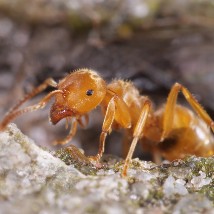
The yellow meadow ant is among the most common types of ants in the UK. This underground ant species is less likely to be seen but plays a vital role in soil health.
When a colony of this ant species reaches a size of more than 250 000 workers, it’s common to observe the presence of multiple queen ants inside a nest.
- Appearance and size: Brownish-yellow or just yellow, Lasius Flavus is very distinctive and slightly fuzzy, compared to other species. The queen is usually dark orange or brown. The bottom part of its body is orange, as well as the legs. Small ants of the species that have just finished metamorphosis are light yellow in colour completely. Workers of the these British species are 2-5mm in size while a queen is about double the size of the worker starting at 7mm and reaching a length of up to 9mm. Yellow meadow ants have a monogyne queen. This means that in their nest there is only one queen.
- Growth and development: The growth process of the yellow ant is very similar to the one of the black ant. It takes about 9 weeks for a worker to emerge and to become part of the colony. In the same way, as the black ant, the yellow one spins a cocoon to make a transition from the pupa to its final stage of a developed ant.
- Habitat: Yellow ants refers undisturbed grassy areas such as fields, pastures, and meadows. They build underground nests with complex tunnel systems. It is their underground nests that contribute to the health of the soil ecosystems.
- Behaviour: Rarely seen above ground, feeds on aphid honeydew. Yellow ants are underground types of ants and beneath the surface is where you are most likely to find them. This ant species usually nest in grassy areas where their nest is later covered in grass completely which adds protection to the nest from predators and natural elements. You can easily spot a yellow ants nest in your garden by the clear spots of grass in the lawn, with a closer inspection it’s easy to confirm the presence of the species.
- Threat: Yellow meadow ants do not sting or bite humans and are not known to invade homes. Also, they pose no threat to pets like cats, dogs, or livestock.
Yellow meadow ants are a non-aggressive and are beneficial ant species in the UK. This type of ants is a good fit for people who want to try ant keeping as a hobby as they require low maintenance efforts. Yellow ants of this species cannot bite or sting a person so they are safe in every aspect of ant keeping.
Southern Red Wood Ant (Formica Rufa)
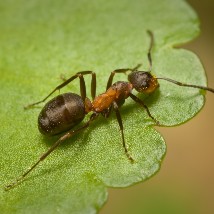
What are the big brown ants in the UK? In the UK, the Southern wood ant, or Red wood ant, is one of the largest and most impressive ant species.
These types of ants are known for their large nests, aggressive defense tactics, and significant role in woodland ecosystems.
- Habitat and nests: Primarily found in deciduous and coniferous forests. Red wood ants prefer sunny locations with access to food and nesting materials. They build large, dome-shaped nests made of pine needles, twigs, and other plant materials. In contrast to other ant species in the UK, Red wood ants has multiple queens in a nest. The largest nests may have up to 400 000 workers and as near as 100 queens in the same nest. The nests of red wood ants are associated with tectonic faults. They also often reach a big size in height and diameter and may become as high as an average adult human.
- Size and appearance: Southern red wood ant is reddish-brown with a black head and abdomen. The average size of the red wood ant worker is 4.5 to 9mm in length. Queens are only a little bit bigger, reaching up to 12mm. You can easily distinguish a queen from a worker by the absence of hair on the queen’s abdomen.
- Feeding habits: Red wood ants feed mostly on the honeydew, emitted by aphids but they also consume arachnids and insects. Southern red wood ant is a good natural scavenger and will collect and transport food to the nest where the whole colony will feed. Red wood ants leave trails when scavenging food that are up to 100 meters long, but older workers may reach even further distances from the nest.
- Danger to humans & pets: Red wood ants do not sting, but they spray formic acid, which can irritate skin and eyes. They rarely enter homes and are mostly found outdoors.
Black Ant (Formica fusca)
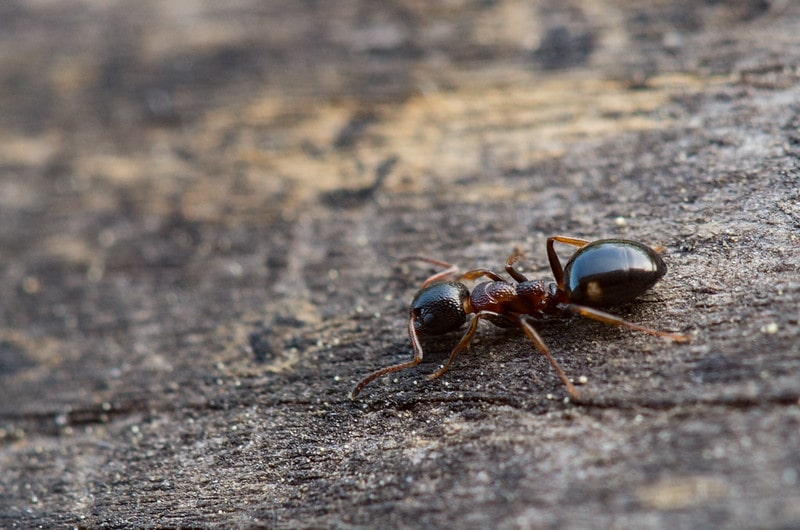
The Formica fusca, also known as the Dusky Ant, is a species of large, dark brown to black ants commonly found in the UK. They are known for their timid nature and preference for woodland and grassland habitats.
- Habitat: This type of ant prefer deciduous and coniferous forests, often found under tree bark or in rotting logs. Black ants are occasionally seen in urban green spaces, though they avoid human dwellings. They build underground nests in sandy or grassy soils, but may also use hollow logs, moss, or leaf litter. Hedgerows are also attractive to this ant species and it’s common to spot a nest made in proximity to a line of closely spaced shrubs.
- Size and appearance: Black ants workers are 4-7 mm, while queens grow up to 12 mm. Dark brown to black, with a slightly glossy and shiny exoskeleton. This ant species are easily distinguished by their yellowish legs. The underside of the ants’ heads doesn’t have any erect hairs.
- Behaviour and diet: Black ants prey on small insects and scavenges dead organisms. They do not sting or bite and rarely invade homes. Black ants are one of the more peaceful ant species in the UK. Black ants are not aggressive and rely on their speed and escape tactics rather than fighting. Their tunneling improves soil quality. Underground seed movement by black ants benefits some plant species.
European Fire Ant (Myrmica Rubra)
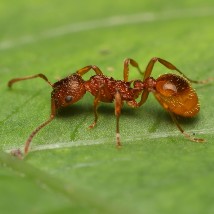
The European fire ant, also known as the common red ant is another member of the UK ant species. Its head is dark-coloured but the rest of its body is red, which makes the species easy to identify.
This ant species lives under large stones and boulders, it also seeks shelter under fallen trees or even inside specific types of soil that provide the needed nutrients for sustenance.
- Appearance ans size: Myrmica Rubra has a distinctive thorax abdomen and three pairs of legs as well as antennae. The abdomen is darker and the head of the Fire ant has a unique head colour, resembling copper. The size of the European fire ant is typical for most ants, slightly larger than black garden ants. Workers vary in length from 2 to 6mm. The queen isn’t any bigger than the largest workers. However, its minimum size starts from 5 – 5.5mm which means that any other smaller insects from the species are unlikely to be a queen.
- Behaviour: Fire ants’ colony is of the polygyne type which means they can have multiple queens, up to 100 in a nest but exceptions of more are also possible. The European Fire Ant is one of the few ant species in the UK that can sting. Though not as aggressive as tropical fire ants, they are known for their painful stings and territorial behaviour. Stings are similar to a wasp sting but not as severe. Multiple stings can be painful, especially for children or pets.
- Habitat and feeding habits: European fire ant prefers damp environments like rotting wood, meadows, and gardens. Nests are often small, with soil mounds or entrance holes near stones or wood. European fire ants eat insects, nectar, and sugary substances.
Check also: Biting and Stinging Insects in the UK
Flying Ants (Alates)
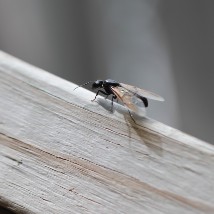
The term “Flying Ant” (Alates) refers to the winged reproductive ants of various species, including the Black Garden Ant (Lasius niger), Yellow Meadow Ant (Lasius flavus), and Red Ant (Myrmica rubra).
Flying ants are not a separate species – they are the future queens of ant colonies, taking part in a mass mating event known as Flying Ant Day.
- Size and appearance: The larger ants are the queens. They can be up to 15mm long much larger than the worker ants. Flying ants have a long, narrow waist and two wings on each side of their body. If they are crawling on you, they are probably a different type of ants. Queens live for a rather long time, up to 15 years.
- Behaviour – The presence of flying ants indicates they are attempting to establish new colonies. Only reproductively capable ants have wings, and they will only be able to fly during the time of the breeding season. Males do not work in nests – they are produced by colonies during flying ant season. They develop from unfertilised eggs and only live for a very short time. Their only purpose is to mate with new queens.
Flying ants are simply reproductive ants taking part in their mating flight. They do not pose a threat but can be annoying when they swarm. They usually disappear within a day or two.
Sugar Ants (Tetramorium Caespitum)
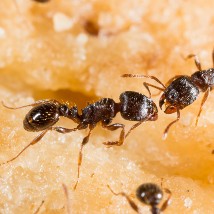
Unlike the “banded sugar ant” in Australia, sugar ants in the UK are a group of ant species with comparable traits in appearance and behaviour. Also known as the “sugar ant” or “pavement ant”, the Tetramorium Caespitum ant species is most common in native Europe and can be found in the UK as well.
Sugar ants are likely to attack other ant nests in the late spring when they’re exploring new territories to expand their population. These wars between ants often happen in public places because this UK ant species is known to nest under pavements on the streets. In some areas, it’s common to observe thousands of dead ants while walking out because of this.
- Appearance: Sugar ants is 2.5 to 4mm in length and is usually black or dark brown in cases of lighter pigmentation. Workers may sting a person but cannot cause anything serious except minor pain at the moment of the sting.
- Behaviour: The sugar ant’s nuptial flight begins at the end of the spring and in the beginning of the summer. It’s the time when queens and workers start flying for the purpose of mating. All queens who mate successfully shed their wings and start looking for a proper place to make a nest. They lay eggs thereafter digging a claustral chamber. Before the first generation reaches maturity, the queen takes complete care of the whole first offspring on her own. Later, the colony becomes autonomous.
During the hot months, this type of ants need more fresh air and to provide such, they have to make ventilation for the nest. They do so by digging in the sand between pavements, creating tiny holes for air to flow through.
Hairy Wood Ant (Formica lugubris)
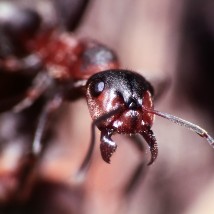
The hairy wood ant is common British ant species in the forests. It is easy to identify when you take a closer look at its hairs that go down in the direction of their eyes.
It has a dark brown abdomen, a red head, and a dark brown thorax. Their size is also bigger than the average, where workers can reach up to 12mm in length.
- Behaviour: A colony of wood hairy ants is much bigger than average, it can contain up to half a million workers which results in enormous dome-shaped nests being formed in their natural habitat. The hairy wood ant lives in big colonies with multiple queens.
- Diet: All ants in the colony are carnivores which means they feed on other animals as part of their eating habits. The hairy wood ant collects honeydew from aphids and forages for food along trails connecting nests.
These ants are unique in the way they emit a specific odour which is very distinctive for every member of the colony. When an organism without this odour appears in the nest, it’s being identified by the hairy wood ant instantly.
Scottish Wood Ant (Formica aquilonia)
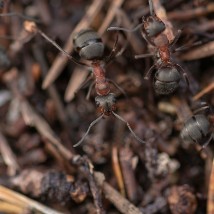
Scotland within the UK is home to a significant species of wood ant, the Scottish Wood Ant.
In forest ecosystems, the Scottish Wood Ant plays an important role as a food source for a variety of bird species, such as the green woodpecker and capercaillie.
- Appearance: Scottish wood ants have reddish-brown head is a typical feature, so is the dark black abdomen structure. Compared to other ant species in the UK, the hairs of the formica aquilonia are shorter. The widest part of the body is the head which grows up to 2mm in width while the body extends to its maximum length of up to 8.5mm, starting at about 4mm minimum.
- Behaviour: The Scottish wood ants make huge nests by linking their nests in proximity. The workers constantly search for honeydew from other insects and take it back to the nest to enhance the colony. A parent nest may have a number of queens before it gets fused with other adjacent nests. Winged workers usually get out of the nest in the summer and continue to do nest expansion efforts.
Carpenter Ants (Formica ligniperda)
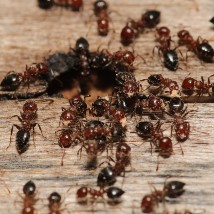
Known as carpenter ants, this species builds their nests inside woods but does not consume any wooden material during the process. In the UK, these ants are seen inside properties where wood has been used during the building and renovation process for both – the exterior and interior of the building.
Formica ligniperda also collects honeydew from aphids by stroking them with their antennae.
- Behaviour: Because of their affinity for living inside wooden structures, carpenter ants’ workers can cause terrible structural damage to buildings. On the other side, the fact that these ants successfully excavate wood helps greatly for the decomposition of forests around the world. The black carpenter ant is the most popular species from the whole Camponotus genus, which includes over 1000 different species.
- Nesting: High levels of humidity are necessary for the carpenter ants to build and maintain their primary nests in good condition as they are very sensitive to humidity in general. Satellite nests are built later when the workers in the primary nest become mature enough. The resident nests are home to life forms at earlier stages of the development of the species such as larvae and pupae. In the primary nests live the workers, their queen, recently hatched larvae and eggs that have just been laid. Satellite nests do not require the same requirements for humidity as the primary nests and can be built in places that are somewhat dry such as inside fallen woods.
- Feeding habits: The carpenter ant is a carnivorous species but also scavenges food differently from animals. Dead insects are on the menu of the carpenter ant quite frequently but they also consume honeydew from aphids and nectar from plants. Carpenter ants eat any sugary source of food such as honey and fruit juices, that’s why it’s important to always take care of proper food storage in your home so you don’t attract these insects with your negligence in the kitchen.
You are most likely to spot carpenter ants in your home during the night as they are more active then. Take good care of any other dead insects on the premises in order to avoid attracting carpenter ants which would feed on these deceased insects for sure.
Pharaoh Ants (Monomorium pharaonis)
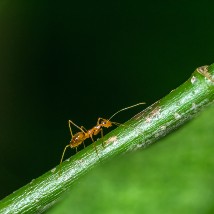
In the UK, pharaoh ants (Monomorium pharaonis) are a significant invasive pest, particularly indoors.
Due to their adaptability and health risks, pharaoh ants pose a persistent threat in the UK. Managing infestations effectively requires regularly pest inspections.
- Appearance: A pharaoh ant is a small (1.5–2 mm long), light yellow to reddish brown creature with a dark abdomen.
- Habitat: Pharaoh ants prefer heated buildings such as hospitals, hotels, apartment blocks, and food facilities.
- Nesting: It is common for colonies of pharaoh ants (up to 300,000) to hide in walls, ducting, or near heat sources like boilers.
- Healthy risks: The pharaoh ant carries bacteria such as Salmonella, Staphylococcus, Streptococcus, and Clostridium, posing a risk to healthcare settings. They compromise sterile environments and their bites and allergens from body parts can trigger respiratory issues.
Can Ants Cause Structural Damage in the UK?
As mentioned above, carpenter ants are among the most destructive ant species of all. They can damage the wooden elements of a structure so badly so the integrity of the building is no longer reliable. Hollowing out nesting areas over time weakens the integrity of wooden structures. Particularly in load-bearing wooden beams, wood-damaging species of ants can cause significant damage to homes. Carpenter ants create extensive underground tunneling systems that could damage foundations.
This is why we recommend hiring professional ant exterminators in the beginning when you notice signs of ants . If the infestation is severe, pest control experts can use advanced treatments to eliminate ant colonies.
Final Thoughts
Ants are very tiny crawling insects that are unique workers and a great example of perfect organisation. There are thousands of species across the world but there are less than a hundred types of ants in the UK. Most of them are harmless. Anyway, some species can pose a threat to your health. Most commonly, ants are annoying and difficult to be exterminated. For that reason, professional help is recommended before the infestation exceeds.
Our purpose is to provide you with some useful information regarding the types of ants in the UK, the possible health risks and the dangers that may be associated with them for you and your family. Please note that we don’t provide professional medical advice or guarantee that you will experience these concerns.



